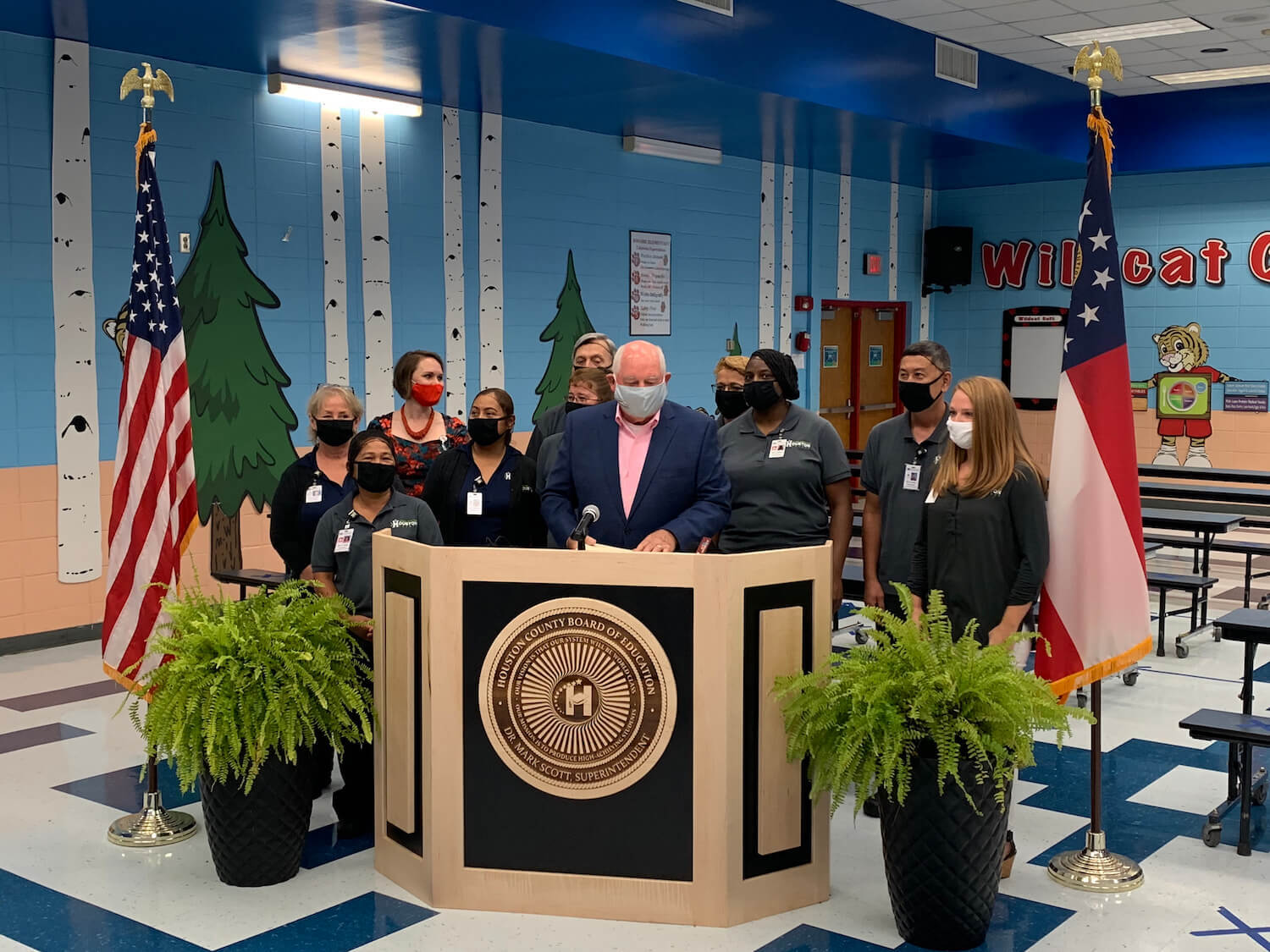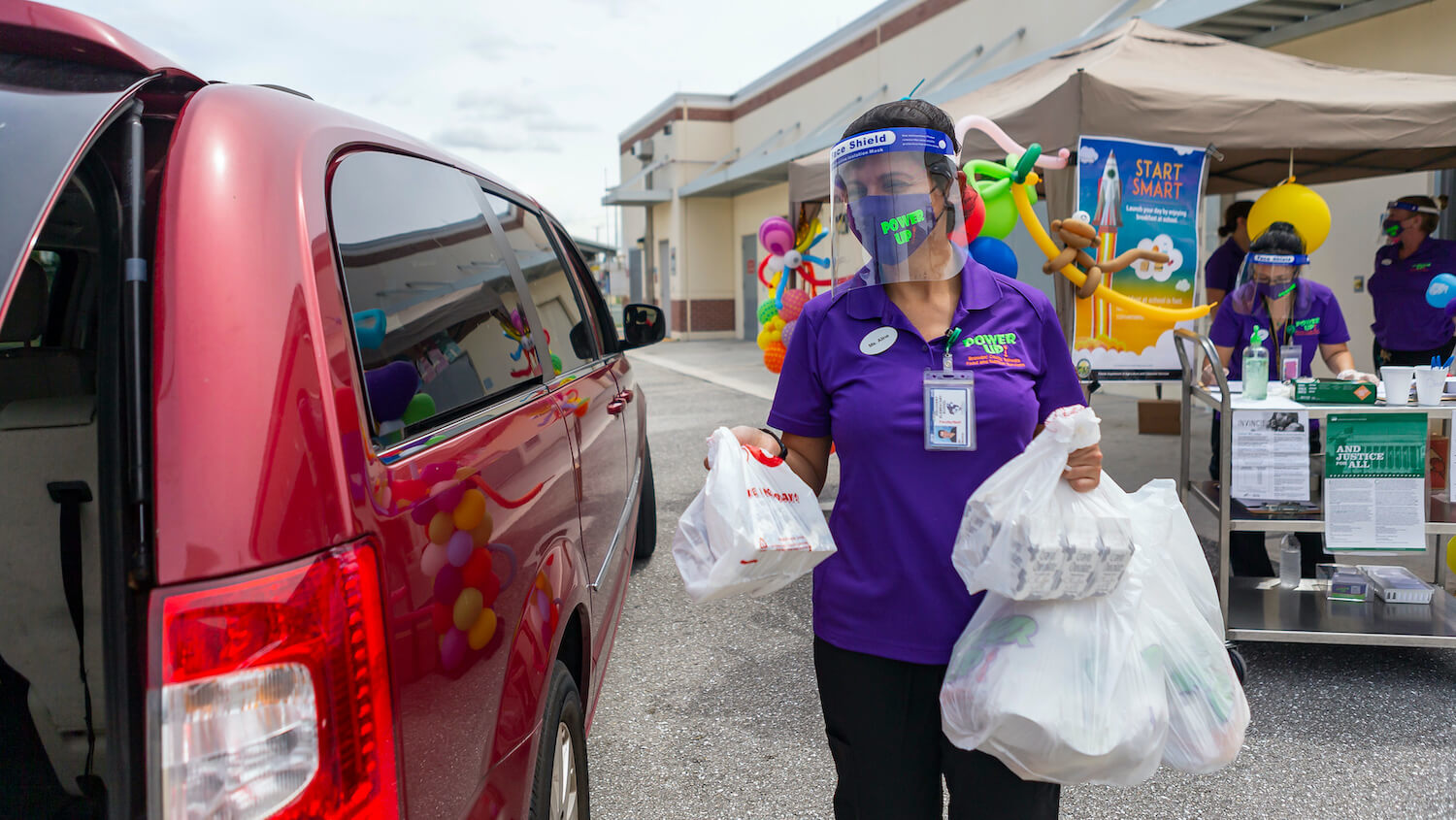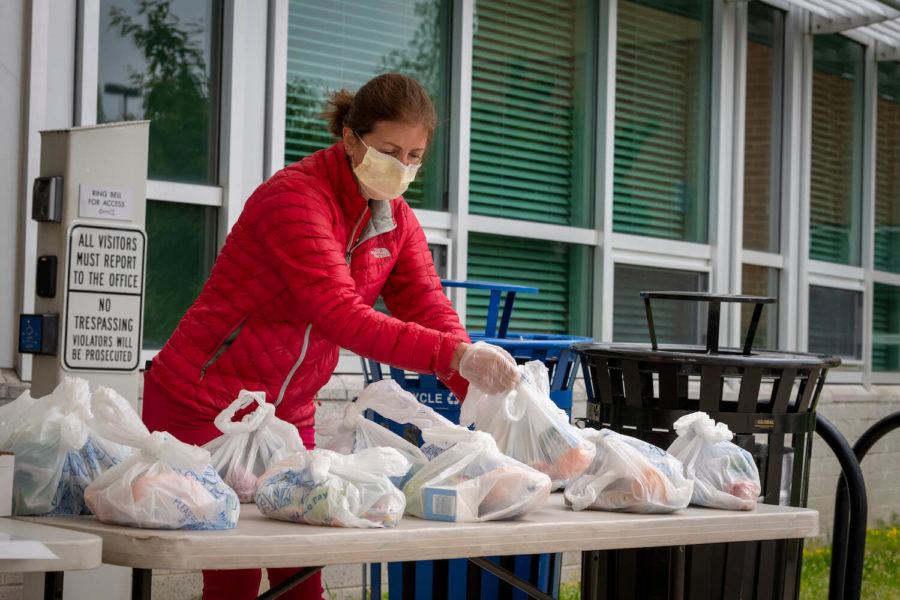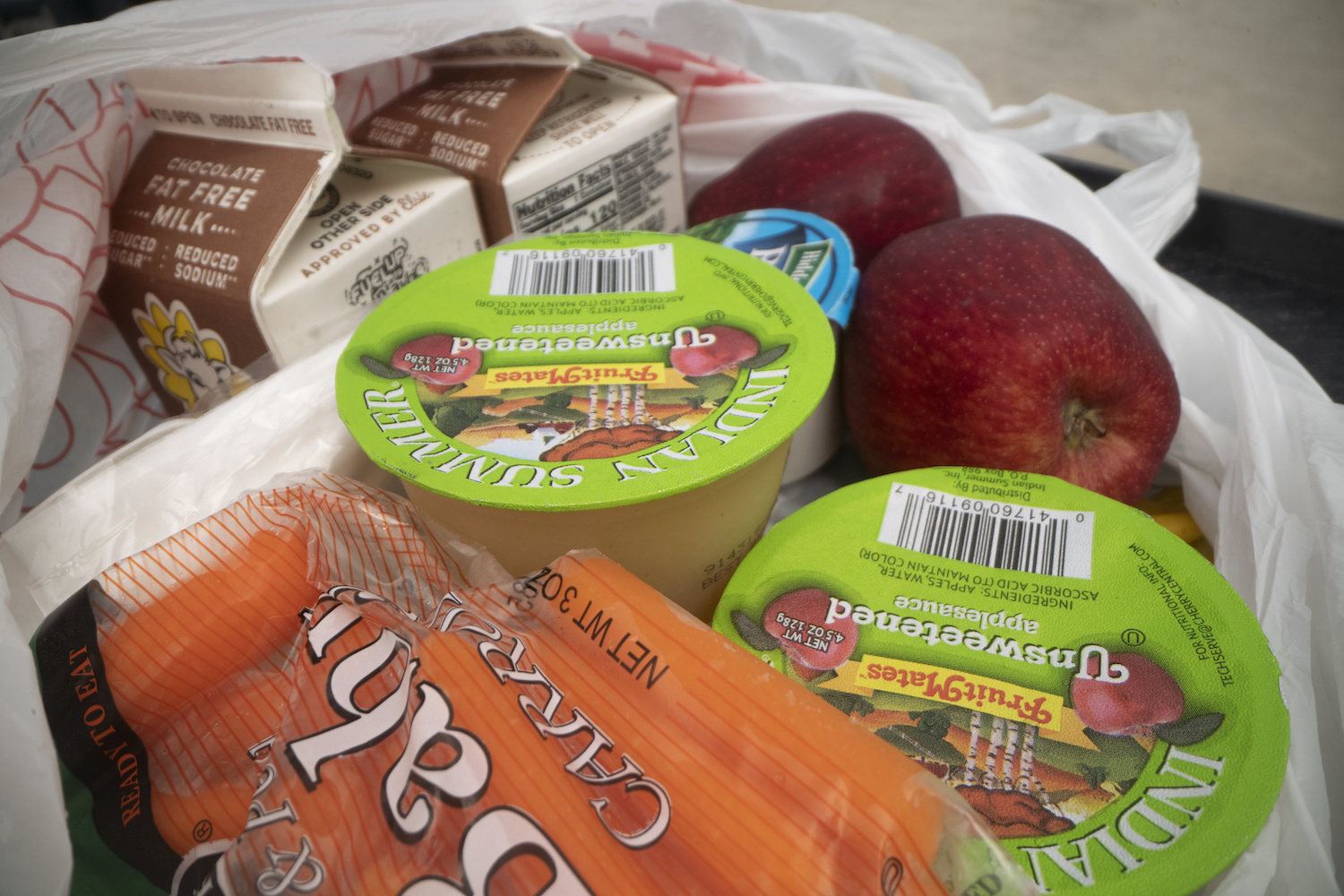The move permits schools to offer food to all kids, regardless of income or enrollment, through the end of 2020 “as funding allows.” It follows weeks of criticism from lawmakers on both sides of the aisle.
The Department of Agriculture (USDA) on Monday announced that it would allow schools to continue serving free meals to all kids through the end of 2020 so long “as funding allows.” This is a complete reversal of its earlier position, which would have required nutrition departments to resume charging students for food and to turn away any children not enrolled in their school district beginning tomorrow, September 1, 2020.
The news was warmly welcomed by school nutrition directors, many of whom are relieved to have the necessary authorization to serve food to any child, at no cost, through the fall.
“We are ecstatic,” said Jessica Shelly, student dining services director for Cincinnati Public Schools.
Before the coronavirus pandemic, children had to pay for school meals unless their household income qualified them for free or reduced-price lunches. When Covid-19 outbreaks forced classes online, and as unemployment surged nationwide, USDA issued a handful of regulatory waivers that empowered schools to become de facto community feeding centers. This included permission to operate grab-and-go meal distribution and to allow parents to pick up food on behalf of their kids.
Crucially, the agency also gave schools the green light to serve all children food at no cost, including those too young for school or enrolled in private institutions. That waiver was set to expire today, despite pleas from school nutrition directors and lawmakers on both sides of the aisle to renew it.
Without the waiver, some school officials had already made the difficult decision to deny food to many children in recent weeks.
“We had to tell families, ‘I’m sorry. One of your kids is a student, but the other two kids in your family don’t get meals,’” Shelly recalled. Cincinnati Public Schools, which started fall instruction on Wednesday, and is distributing weekly 10-meal packs each containing five breakfasts and five lunches to every student (a mix of free meals and meals paid for by families). “That was heartbreaking.”
[Subscribe to our 2x-weekly newsletter and never miss a story.]
Today’s move doesn’t simply help to increase food access, at a time when food insecurity and demand for hunger relief is rising. Allowing schools to serve all children also brings nutrition departments more revenue, as USDA reimburses them on a per-meal basis. Most school food directors I spoke with said they wouldn’t deny food to enrolled students if they couldn’t afford to pay for them, but that schools would likely have to cover the difference using general funds.
Without the waiver, “we’re gonna take a major hit from a funding perspective because we’re not going to be able to claim any of those meals,” said Bertrand Weber, director of culinary and nutrition services for Minneapolis County Public Schools in Minnesota in an interview last week.
“The announcement made today remains a temporary solution that will expire long before the child hunger crisis ends.”
USDA said that Monday’s move follows funding projections based on school meal participation in April, which suggest that the agency cover the cost of free meals for all kids “for the remaining months of 2020.”
Lawmakers as well as the School Nutrition Association, which represents school food directors, applauded the move, while calling for a further extension through the end of the 2020-2021 school year.
“I am pleased that USDA decided to reverse its previous position and extend critical summer meal program waivers until the end of the year,” said Democratic Representative Bobby Scott of Virginia. “However, the announcement made today remains a temporary solution that will expire long before the child hunger crisis ends. USDA must immediately use its authority to extend summer school meal flexibilities through the end of 2020-2021 school year to ensure schools can continue to meet the needs of struggling families.”
In July, Scott sponsored a bill that would make every student nationwide eligible for free lunch for the 2020-2021 school year.
Shortly after scaling down, in anticipation of a drop in participation, schools now must scale their food service operations back up. But that’s a good problem to have.
“We’re reworking everything,” Shelly said. “We’re completely putting into place a plan…to make sure our community knows that everybody is welcome at our table again.”
Correction: An earlier version of this story stated that USDA’s extension runs through “the end of 2021.” It has been corrected to read “the end of 2020.”








